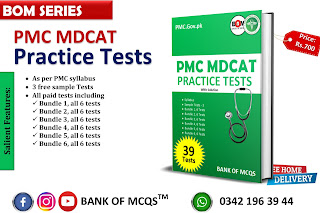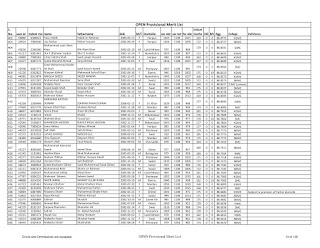chap.4 Bioenergetics MCQs
|
1. |
Chapter no.4 bioenergetics |
|
|
2. |
Which
product is produced when glysine is converted to serine? (a)
Glucose (b) Carbon
dioxide (c)
Oxygen (d) Hydrogen |
B |
|
3. |
In
C4 photosynthesis the first formed product is: (a)
Oxaloacetate (b) PGA (c)
4-carbon compound (d) Both a and c |
D |
|
4. |
Which
enzyme is used for the fixation of carbon dioxide in C4 photosynthesis? (a)
Rubisco (b) Pepco (c)
RuBP (d) All of
these |
B |
|
5. |
Number
of ATPs produced from one NADH is: (a)
1 (b) 2 (c)3 d) 4 |
C |
|
6. |
Number
of ATPs produced from FADH is: (a)
1 (b) 2 (c) 3 (d)
4 |
B |
|
7. |
Bioenergetics
is the study of energy transformation in (a)
Non living thing (b) Atmosphere (c)
Biological system (d) All of these |
C |
|
8. |
Which
one is the ultimate source of energy for living organisms? (a)
Petrol (b) Diesel (c)
CNG (d) Sunlighta |
d |
|
9. |
Which
one of the following process is exergonic and destructive process? (a)
Respiration (b)
Photosynthesis (c)
Both a and b (d) None of these |
A |
|
10. |
About
…… of the total of sunlight that enters our atmosphere reaches the earth surface (a)
10% (b)
20 % (c)
30% (
d) 40 % |
D |
|
11. |
Chlorophyll
is a complex organic compound which absorbs mainly and portion of sunlight. (a)
Blue and green (b) Red and green (c)
Blue and red (d) Green and
yellow |
C |
|
12. |
The
formula of chlorophyll-a is: (a)
C55H72O5N4Mg (b) C55H70O6N4Mg (c)
C55H78O6N4Mg (d) C35H70O6N4Mg |
A |
|
13. |
In
C4 plant synthesis of sugar occurs in: (a)
Mesophyll cell (b)
Bundle sheath cells (c)
Spongy parenchyma cells (d)
Palisade parenchyma cells |
B |
|
14. |
The
number of carbon atoms present in ribulose biphosphate is:. (a)
6 (b) 5 (c)4 (d) 3 |
B |
|
15. |
Cyclic
photophosphorylation releases: (a)
ATP and NADPH2 (b)
ATP, O2 and NADPH2 (C)
ATP (d)
NADPH2 and O2 |
C |
|
16. |
In
the dark reaction of photosynthesis: (a)
PGAL is formed (b) CO; is fixed (C)
ATP is consume (d) All of these |
D |
|
17. |
Carbon
dioxide is more abundant in (a)
Stroma (b) Thylakoid (C)
Both of these (d) None of these |
A |
|
18. |
Which
of these is hydrophilic? (a)
Porphyrin (b) Phytol (c)
Both of these (d) None of these |
A |
|
19. |
Which part of plant capture light energy: (a)
Mesophyll Cell (b) Plastid (c)
Chloroplast (d) All of these |
D |
|
20. |
The
presence of free oxygen made possible the evolution
of: (a)
Respiration (b)
Photorespiration (c)
Both b and a (d) None of these |
A |
|
21. |
Which
part of chlorophyll contain Mg (a)
Porphyrin (b) Pyrrole
rings (c)
Haem portion (d) All of these |
A |
|
22. |
Which
statement best define Bioenergetics: (a)
Reaction or processes that require energy and then store it (b)
Reaction which release energy (c)
The anabolic process in living cells (d)
Process by means of which living cells store use and release energy |
D |
|
23. |
The
curved - symbol in ATP indicate P-P-P: (a)
Low Energy bond (b) High Energy bond (c)
Unstable bond (d) Both b and c |
D |
|
24. |
During
photosynthesis oxygen come out from water was confirmed using IN isotopes of oxygen
by: (a)
C.B Von Neil (b) Robin Hill (c)
R. Scarisbrick (d) Samuel Rubin |
B |
|
25. |
Thylakoids
membranes containing chlorophyll are involved in the synthesis of ATP by the process
of: (a)
Photosynthesis (b) Chemosynthesis (c)
Chemiosmosis (d) Osmosis |
C |
|
26. |
What
does not occur in the light reaction? (a)
Photolysis (b)
Photophosphorylation. (c)
Oxidation of water (d)
Reduction of CO2 |
D |
|
27. |
The
total photosynthesis including the food consumed by the producer is: (a)
Productivity (b)
Primary productivity (c)
Gross primary productivity (d)
Net primary productivity |
C |
|
28. |
A
photo system contains (a)
ADP+Chlorophyll "b" (b)
Photon (c)
Light+Chlorophyll "a" (d)
Pigment or light capturing Antenna + reaction center + electron acceptor |
D |
|
29. |
How
many ATP molecules are synthesized and released as a result of substance
level phosphorylation: (a)
2 ATP (b) 4 ATP (c)
6 ATP (d) 36 ATP |
B |
|
30. |
Which
of the following is not source of CO2? (a)
The burning of fuel (b)
Photosynthesis (c)
The decomposition of animal matter (d)
Respiration |
B |
|
31. |
Which
is least important in photosynthesis? (a)
Sunlight (b) Green
light c)
Blue light (d) Red light |
B |
|
32. |
60%
of the world's photosynthesis is carried out by: (a)
Monocots (b) Gymnosperms (c)
Angiosperms (d) Algae |
D |
|
33. |
The
rate of photosynthesis in independent of: (a)
Light intensity (b) Duration of
light (c)
Light quality (d) Temperature |
B |
|
34. |
How
many ATP produced in cellular respiration is a result of oxidative phosphorylation? (a)
A maximum of 32 (b) A maximum of 36 (c)
A maximum of 38 (d) A maximum of 4 ATP |
A |
|
35. |
The
light independent reactions occur in: (a)
Grana (b) Stroma (c)
Cytoplasm (d) Outer layer
of chlorophyll |
B |
|
36. |
During
photosynthesis green plants capture light
energy and converts it into: (a)
Heat energy (b)
Chemical energy (c)
Mechanical energy (d) All of these |
B |
|
37. |
Which
pigment do not belong to caratenoid? (a)
Green (b) Yellow (c)
Red (d) Orange |
A |
|
38. |
By
the process of photosynthesis carbon dioxide is converted into: (a)
Monosaccharide (b)
Disaccharide (c)
Polysaccharide (d)
Polysaccharide |
A |
|
39. |
Which
one is a correct statement? (a)
Short wavelengths are less energetic (b)
Long wavelengths are more energetic (c)
Short wavelengths are more energetic (d)
All are correct |
C |
|
40. |
The
light dependent reactions occur in: (a)
Grana (b)
Stroma (c)
Cytoplasm (d)
Outer layer of chlorophyll! |
D |
|
41. |
Number
of phosphates in one ATP are: (a)
0 (b) 1 (c)
2 (d) 3 |
C |
|
42. |
Visible
light range is: (a)
360-760 nm (b)
390-790 nm (c)
390-760 nm (d)
390-860 nm |
D |
|
43. |
Chlorophyll
absorbs wavelength of: (a)
390 - 430 nm (b)390-760
nm (c)
670 - 700 nm (d) Both a and c |
B |
|
44. |
The
wavelength absorbed by carotenoids ranges in between: (a
400-500 nm (b)
500-600 nm (C)
600-700 nm (d) All of these |
B |
|
45. |
Antenna
complex contains: (a)
Chlorophyll A (b) Chlorophyll B (c)
Both of these (d) None of these |
A |
|
46. |
In
non-cyclic electron transport chain of light reaction the first electron
acceptor is (a)
PQ (b) cyt
"b" (c)
cyt "f (d) PC |
D |
|
47. |
Which
one is not an electron acceptor of photosystem II: (a)
PQ (b) cyt (c)
PC (d) Fd |
C |
|
48. |
The
product of light reaction is: (a)
ATP (b)
NADPH (c)
Both a and b (d)
None of these. |
B |








Comments
Post a Comment